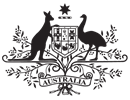The Dreyfus Files - The Age
Lois Nadjamerrek is a senior traditional owner of the Mok Clan estate around Kabulwarnamyo on the West Arnhem Land Plateau, south of Maningrida and south-east of Kunbarlanja.
Her family's country is nearly 400 kilometres east of Darwin, and for more than half the year the community can only be accessed by light plane, and then a bumpy drive along a long dirt road that's surrounded by endless bush.
The living conditions at Kabulwarnamyo are not flash the whole community lives in what are essentially large tents, but they have fridges, lighting and washing machines.
There is no school, but the kids of the community who go to school in Gunbalanya are home for the dry season holidays.
And from here, Lois's community is operating a world-first program that's helping in Australia's efforts to combat climate change with fire, and with technology.
An area bigger than Victoria is ignited by wildfires each year in the tropical savannas.
By controlled early burning, it's possible to significantly reduce the number of uncontrolled late-season wildfires and the carbon emissions they release.
Lois's community has shown that this sort of fire management can also generate income and create jobs.
Last week I called Lois on her mobile phone to ask permission to visit her on her country a huge change in communication from when I first worked in Arnhem Land in 1979. As a Northern Land Council field officer I worked for the traditional owners on the negotiations to create Kakadu National Park, now a national treasure, and on fishing and sea rights in the area around Milingimbi and Crocodile Islands. Reaching someone in Arnhem Land then often meant pre-arranging a radio telephone call with a day or two's notice.
And when I arrived at Kabulwarnamyo on Wednesday, I saw just how much things have changed. In the heart of the community, a satellite dish provides telephone communication and access to the internet and online fire mapping technology, which allows the indigenous rangers to track the impacts of their strategic burning.
The project, which is funded under an agreement between the NT government and energy company Conoco Phillips, commits indigenous land managers to reducing carbon emissions by a minimum of 100,000 tonnes of carbon dioxide equivalent against a historical average. Each year for 17 years, Conoco-Phillips has agreed to pay $1 million for fire management of the lands, which is employing Arnhem land people and securing the company with millions of tonnes of greenhouse savings.
The project has been running since 2006, through five dry seasons. As well as the strategic early dry season burning, rangers have fought wildfires in the late dry season from July to November. The project uses traditional knowledge of burning patterns, and is seen by fire ecologists as protecting native flora and fauna and biodiversity.
It's been rightly recognised for its success not only in reducing long-term greenhouse gas emissions but also in providing revenue and jobs and protecting cultural and heritage values of Aboriginal communities. The Australian Museum has awarded the project the IAG Eureka Prize for Innovative Solutions to Climate Change.
And when the federal government's Carbon Farming Initiative comes into operation later this year, it is expected that more of these projects will start up across Australia's Top End.
With 40 per cent of the Northern Territory's emissions coming from wildfires, these projects will not only create jobs and economic opportunities in remote indigenous communities, but will play a significant part in Australia's response to the global threat of climate change in a way that is uniquely and proudly Australian.



